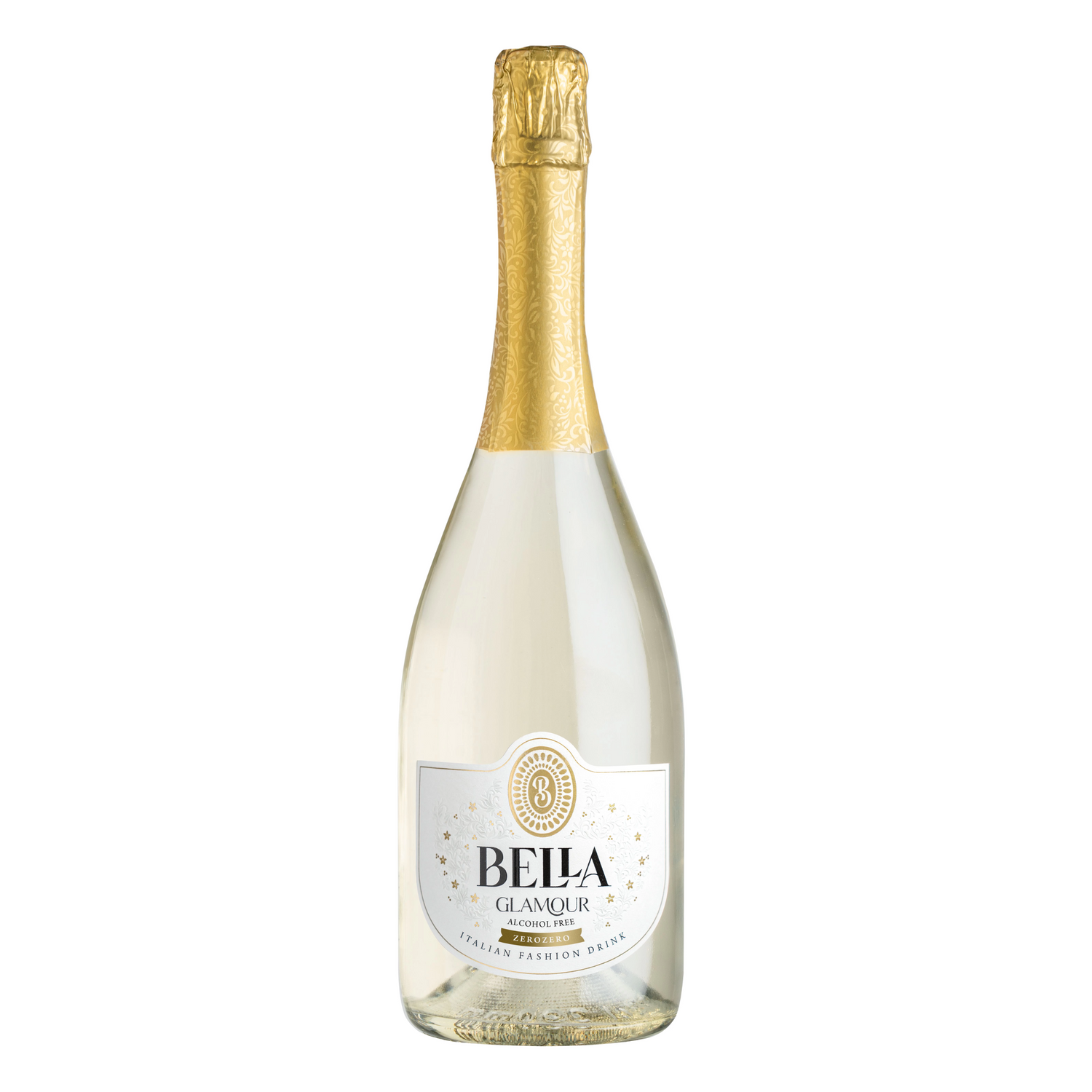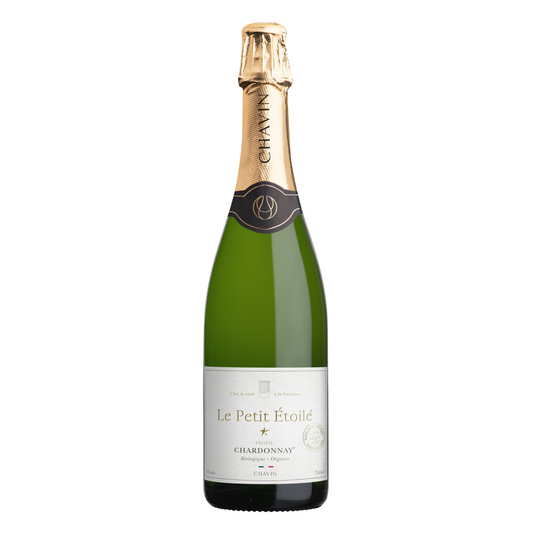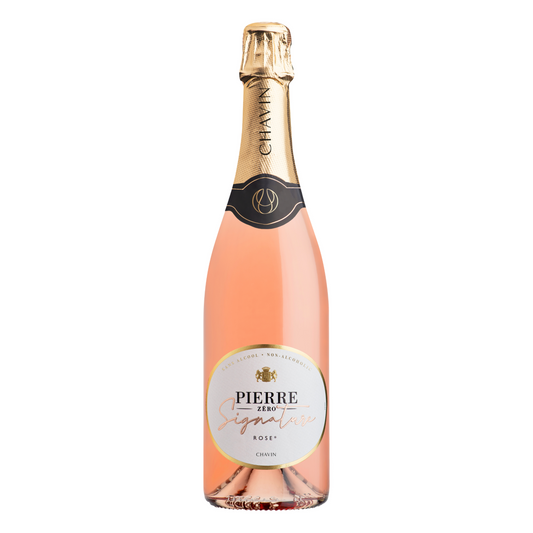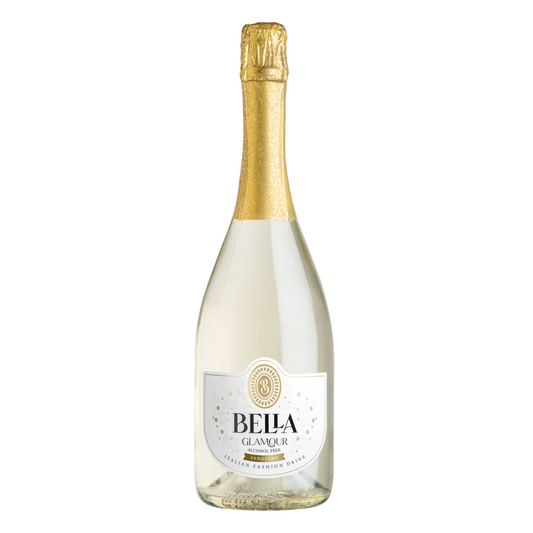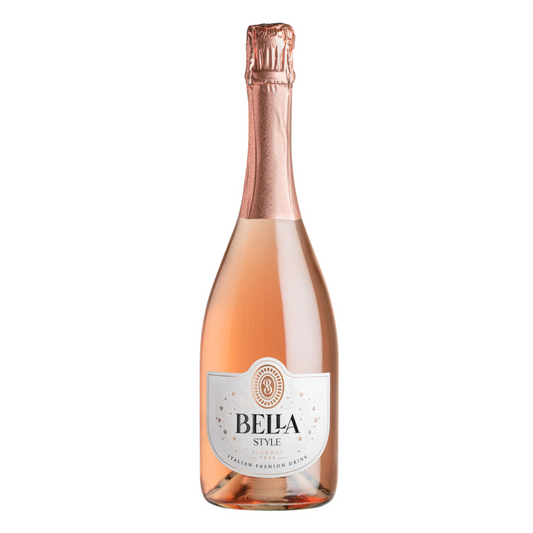What makes champagne sparkling – even without alcohol?
A buborékos italok világa sokkal színesebb, mint gondolnánk: pezsgő, habzóbor, gyöngyözőbor — de mi is a különbség köztük? És hogyan készül mindez alkoholmentes változatban? Ebben a bejegyzésben minden titokra fény derül, hogy magabiztosan választhass, akár alkoholos, akár alkoholmentes verzióról van szó.

The world of bubbly drinks is much more colorful than we think: champagne, sparkling wine, semi-sparkling wine — but what's the difference between them? And how is it all made in a non-alcoholic version? This post will reveal all the secrets so you can choose with confidence, whether it's an alcoholic or non-alcoholic version.
For many, the term champagne is confused with sparkling wines and semi-sparkling wines , even though these three types of drinks show significant differences in technology, taste, and quality. With the rise of non-alcoholic wines and champagnes, it is even more worthwhile to be aware of these differences. Let's take a closer look at what makes champagne "sparkling" — even without alcohol?
What is champagne?
Sparkling wine is a wine in which the bubbles are not created by adding carbon dioxide , but rather by natural secondary fermentation. After the base wine is made, a second fermentation process occurs, during which sugar and yeast are added to the wine. The carbon dioxide produced during fermentation remains in the bottle or container, ensuring a delicate, long-lasting presence of bubbles.
The classic method of making champagne is known as the "Méthode Traditionnelle", a process characterized by the second fermentation taking place in the bottle, with a longer aging time - the result is a particularly complex flavor and creamy texture.
For a sparkling wine to be officially called sparkling wine, it must meet legal criteria.
One of the most important parameters is the pressure in the bottle, which must be at least 3 bar (often 5-6 bar), the other is that the total alcohol content of the cuvées intended for its production must not be less than 8.5% by volume, and another criterion is the presence of carbon dioxide from the natural fermentation mentioned above. The latter is responsible for the fineness and durability of the bubbles, as well as the intensity of the effervescence, which is also one of the most important indicators of quality. The bubbles of a well-made sparkling wine are small, uniform, and rise slowly in the glass, enhancing the elegance and solemnity of the drink.

What is sparkling wine and semi-sparkling wine?
Among the bubbly drinks, in addition to champagne, we can also find sparkling wines and semi-sparkling wines, which are produced using a different technology and have different parameters than champagne.
Sparkling wine (frizzante, semi-sparkling wine)
Sparkling wine is a wine-based beverage that contains partially or fully added carbon dioxide. It is generally not produced with a designation of origin or geographical indication. The most important technological characteristic of sparkling wine is that during storage (at 20 °C, in a closed container) the dissolved carbon dioxide creates an overpressure of at least 3 bar . This ensures the characteristic effervescence of the beverage, which results in a milder, lighter, fruitier character than sparkling wines.
Sparkling wine (perlwein, sparkling wine)
Sparkling wine is a wine-based beverage made from wine, new wine, grape must or partially fermented grape must. Its total alcohol content must be at least 9% and its actual alcohol content must be at least 7%. A characteristic of sparkling wine is that the carbon dioxide it contains comes entirely from the natural process of fermentation (endogenous). During storage (at 20 °C, in a closed container) a minimum of 1 bar and a maximum of 2.5 bar of overpressure prevails in the bottle , so sparkling wine has a light, gentle effervescence and creates an airy, refreshing effect.
Carbonated perlwein
There is also a special version of sparkling wines, which is produced by adding carbon dioxide. This type is also made from wine, new wine, grape must or partially fermented grape must, with an alcohol content of at least 7% and a total alcohol content of at least 9%. However, the carbon dioxide contained in it does not come exclusively from fermentation, but is partly or entirely added to the drink from an external source, exogenously, and the pressure in the bottle ranges from a minimum of 1 bar to a maximum of 2.5 bar . This version is popular because its production is technologically simpler and faster, while at the same time ensuring the light, refreshing fizz that so many people like.
Sparkling and semi-sparkling wines are therefore more suitable for casual, light drinking occasions, while sparkling wines, due to their complexity, are the stars of more festive occasions. These differences are of course also valid for non-alcoholic versions.

What happens with the alcohol-free versions?
The production of non-alcoholic sparkling wines and sparkling wines can basically be done using two technological approaches.
Premium non-alcoholic sparkling wines typically follow the entire winemaking process of an alcoholic base: the base wine is made, and then secondary fermentation develops the complex aromas, flavors, and natural bubbles that are characteristic of sparkling wines. Then, the alcohol is removed using special de-alcoholization processes , while trying to preserve the original character of the drink. The most common gentle methods include vacuum distillation, spinning cone column technology, and reverse osmosis, which remove the alcohol at low temperatures while protecting the aromas and fragrances. However, since some of the carbon dioxide can evaporate during the process, manufacturers often replace the carbon dioxide after de-alcoholization to maintain the characteristic effervescence of the sparkling wine.
There is another, simpler method: directly making a sparkling drink from non-alcoholic wine or partially fermented base wine , using carbon dioxide. This process is faster and more cost-effective, but the result is usually less complex in taste than the de-alcoholized versions that have undergone the full winemaking process.
From the above, it can be seen that nowadays, thanks to modern technologies, alcohol-free sparkling wines and sparkling wines can be produced that provide a full gastronomic experience with rich aromas, harmonious acid structure, and elegant, delicate bubbles.
Bubbles without compromise
There are many differences between champagnes, sparkling wines and semi-sparkling wines - both technological and qualitative. Traditional, naturally fermented champagnes have a complex flavour and delicate bubbles thanks to their longer maturation, while sparkling and semi-sparkling wines offer a lighter, fresher alternative. In addition to alcoholic versions, we can now also choose from non-alcoholic versions, thanks to modern de-alcoholisation technologies, which have made it possible for anyone, anywhere and anytime to enjoy the special, elegant, refreshing world of sparkling drinks without compromise .
Related Products
-
CHAVIN Le Petit Étoilé Sparkling - non-alcoholic sparkling wine
Vendor:CHAVINRegular price 5.356 FtRegular priceUnit price / per -
CHAVIN Pierre Zero Signature Rose Sparkling - non-alcoholic sparkling rosé wine
Vendor:CHAVINRegular price 8.890 FtRegular priceUnit price / per -
BELLA Glamour ZeroZero - non-alcoholic sparkling white wine
Vendor:BELLARegular price 4.943 FtRegular priceUnit price / per -
BELLA Style ZeroZero - non-alcoholic sparkling rosé wine
Vendor:BELLARegular price 4.943 FtRegular priceUnit price / per
Cikk ajánló
-

Dry November: Try the alcohol-free lifestyle
Dry November. What is the first thing that comes to mind when you hear this phrase? You are the one who says: I accept the challenge! Or the one who shakes his head and admits: For me, that would be too much of a sacrifice. Maybe the one who shrugs his shoulders in confusion while whispering: I've never even heard of him. Whichever group you belong to, dry November may have something new in store for you. What is Dry November and where does the challenge come from? Although we know it as Dry November in our country, the initiative originated in Great Britain and was originally known as Dry January. Today, millions of people join the challenge every year to stop drinking alcohol for a month and experience its beneficial effects. And what is the real purpose of the 30-day challenge? It's important to clarify at the outset: the basic message of Dry November is not to encourage everyone to commit to eternal and complete abstinence. It is more of a 30-day break, a kind of relationship "check-in", during which you can ask yourself: what role does alcohol play in my life? Why it's worth it? The tangible benefits of a dry November Many people may see a month without alcohol as a sacrifice, but in reality it is an investment in yourself. Dry November is not about what you lose, but what you gain. And these gains become tangible in just a few weeks, both for your body and your soul. Physical effects after one month The physical benefits of quitting alcohol are perhaps the most noticeable. While drinking is a pleasant part of social life, it is a constant burden on our bodies. However, a thirty-day break can be a real rebirth for it. The liver can regenerate Our liver is the body's tireless detoxification center, processing every sip of alcohol. If you give it a month to rest, cell renewal begins, fat accumulation decreases, and the liver can function optimally again. Sleep quality may improve While many people think alcohol helps them fall asleep, it actually disrupts their deep sleep cycles. Without alcohol, sleep becomes more restful, so you wake up in the morning not only hangover-free, but actually energized. This extra energy will last you all day, reducing afternoon slumps and coffee cravings. Skin quality may improve You can also check the results of your 30-day alcohol-free life in the mirror. Alcohol dehydrates and can cause inflammation in the body, which can also be seen on the skin in the form of puffiness or redness. During your alcohol-free month, your skin may become clearer, more hydrated, and brighter. Can help you lose weight In addition, cutting out the "empty calories" in drinks is also beneficial for weight control. Many people underestimate the calorie intake of an evening of wine or a weekend beer, so taking a break can also help you lose extra pounds. Mental recharge and clearer thoughts Beyond the physical benefits, a dry November can also bring a real breakthrough in mental health. The alcohol-free period can help clear your mind and bring a mental freshness you haven't experienced in a long time. Improved concentration One of the most common positive feedbacks is improved concentration and focus. Without the "brain fog" that comes with a hangover, work and everyday tasks will go more smoothly. You will feel sharper, more efficient, and more creative. Better mood Many people are familiar with the phenomenon of "hangxiety," where they feel unwarranted tension and grumpiness the day after drinking. Avoiding this is a huge gift in itself, resulting in a more balanced emotional state. More effective stress management This month is also a great opportunity to review your stress management mechanisms. If reaching for a drink in the evening was your automatic response to relieve the tension of the day, now you will be forced to find new, healthier ways to unwind. Whether it's a walk in nature, a good book, exercise, or a deep conversation - the challenge encourages you to more consciously seek out sources of recharge. The Gift of Awareness: Confronting Your Habits Perhaps the most valuable benefit of a dry November is not so much physical or mental renewal as increased awareness. These 30 days are a kind of experiment in which you can honestly face your drinking habits. You can realize in what situations you automatically reach for a drink: for reward, boredom, stress relief, or simply out of habit? During the alcohol-free month , the phenomenon of peer pressure also becomes sharply apparent. You can realize how deeply the culture of drinking together has become embedded in friendly gatherings and celebrations. At the same time, you can learn to handle these situations and realize that you don't actually need alcohol for a good conversation or a relaxed evening. This realization gives you enormous freedom and helps you develop a much more conscious, honest relationship not only with alcohol, but also with yourself and your environment. How to do it: A practical guide to dry November The idea of a 30-day challenge can be both inspiring and daunting. However, success depends more on a conscious strategy than on sheer willpower. If you arm yourself with the right tools and a good plan, dry November will not be a month of struggle, but an exciting, self-discovery journey. Preparation: the first steps to success Before you start, take some time to mentally and physically prepare yourself. The first and most important step is to clarify your personal motivation . Why are you doing this? Do you want to sleep better? Do you want to start your days with more energy, or are you simply curious about what life would be like without alcohol? Write your goal down on a piece of paper and put it in a visible place. It will be your compass in difficult moments. This can then be followed by "cleansing" your environment . This is not only necessary to reduce temptation, it is also a symbolic gesture that signals to yourself: from now on, something new begins. Last but not least, let your community know about your decision. Tell your family and friends that you're going to try Dry November. You don't need to apologize or give a long explanation, just say something like, "I'm going to try Dry November this year, and I'd really appreciate your support." Social life without alcohol Most people are most afraid of social situations. How do you say no to alcohol at a beer party or a family dinner without getting looked at strangely? The secret lies in confidence and preparation. Practice saying no firmly but politely. A simple “ Thank you, I don’t want it right now ” or “ I’m drinking non-alcoholic today ” will do the trick. You don’t owe anyone a detailed explanation. It helps to have a plan in advance. Before you go to a bar or restaurant, think about what you're going to order. Most places now offer non-alcoholic beers, wines, or even mocktails. Having a specific drink in mind can help you avoid awkward hesitation and "Just have one!" statements. Be proactive: organize activities that aren't centered around drinking . Invite your friends for a hike, a cookout, a movie, or a board game night. You'll be surprised how much time and energy you have when your activities aren't centered around alcohol. This month is a great opportunity to recognize **peer pressure** and learn that real relationships don't require mind-altering drugs. Find new routines to replace old ones Often it's not the alcohol itself that's missing, but the ritual associated with it. A glass of wine at the end of a hard day, a toast with friends on the weekend – these are all deeply embedded habits. The challenge is to consciously override these addictions and replace them with new, healthier routines. Notice when and in what situations you most want to reach for a drink. Are you stressed? Tired? Or are you just bored? If you were looking to unwind after work, find other ways to relieve stress. Go for a walk, listen to a podcast, take a hot bath, or brew a special, quality tea. The ritual itself—weighing out the tea leaves, boiling the water, savoring the flavors—can be just as soothing as a glass of wine. Explore new stress management techniques, whether it’s yoga, meditation, or reviving an old hobby. Dry November gives you the opportunity to learn how to take care of yourself without resorting to an external agent. And that knowledge will stay with you after the challenge. What do you drink when you don't drink? Alternatives to alcoholic beverages One of the biggest fears about a dry November is that social events or well-deserved evenings of relaxation will become boring, because one's choices are limited to mineral water and sugary soft drinks. Fortunately, the reality is much more exciting than that. The range of alternatives to alcoholic beverages is now so wide and high-quality that the challenge may not be about giving up, but about the joy of discovery. The revolution of drinks: wines, champagnes, spirits, aperitifs, mocktails Forget the old, watery-tasting non-alcoholic drinks. While non-alcoholic wine used to be synonymous with sweet grape juice, today quality is just as important here – the taste, aroma, and acidity, just like with alcoholic versions. A well-chilled non-alcoholic rosé, a sparkling champagne, or a non-alcoholic aperitif can be the perfect accompaniment to a friendly gathering or a festive dinner. And if you're looking for something really exciting, explore the world of non-alcoholic cocktails, or mocktails . These drinks aren't sweet syrups, but characterful, creative specialties. A virgin mojito with fresh mint and lime, a spicy spitz with herbal notes, or a non-alcoholic gin and tonic can be just as elegant and spectacular as their alcoholic counterparts. Dare to experiment! What happens after the dry November? On the last day of November, at the end of the challenge – before you get back to your usual routine – take some time to evaluate the past month, as you will learn a lot about yourself in these thirty days. In light of this, it is worth asking the following questions: What was it like to wake up in the morning? Did you wake up more rested? Have you noticed a change in your energy levels? Has your skin condition improved? Has your mood become more balanced? Were you able to think more clearly? Has your performance improved? Has the lack of "hangover anxiety" and fatigue given you more time on the weekends? Also think about social situations that you may have been afraid of. What was it like to attend a gathering of friends without alcohol? Did you manage to discover new, exciting drinks? Have you noticed that good conversations don't actually require an escort? These insights are worth their weight in gold because they are not just about one month, but lay the foundations for a new, more conscious future. What can you learn from dry November? The goal of Dry November for most people is not complete and permanent abstinence, but rather developing a healthier and more balanced relationship with alcohol. This approach puts you back in control. You make the decision, not peer pressure, stress, or routines. You may find that you want to live your everyday life without alcohol in the future, and save drinking for special occasions. Or you may discover that non-alcoholic beverages are just as enjoyable an alternative, and you will incorporate elements of a sober lifestyle into your daily routine. The point is to make individual, tailored decisions based on your thirty-day experience. The goal is for you to be in control, not your habits or external expectations. So, are you ready to toast to yourself and your well-being for a month? With a nice non-alcoholic drink ?
Dry November: Try the alcohol-free lifestyle
Dry November. What is the first thing that comes to mind when you hear this phrase? You are the one who says: I accept the challenge! Or the one who shakes his head and admits: For me, that would be too much of a sacrifice. Maybe the one who shrugs his shoulders in confusion while whispering: I've never even heard of him. Whichever group you belong to, dry November may have something new in store for you. What is Dry November and where does the challenge come from? Although we know it as Dry November in our country, the initiative originated in Great Britain and was originally known as Dry January. Today, millions of people join the challenge every year to stop drinking alcohol for a month and experience its beneficial effects. And what is the real purpose of the 30-day challenge? It's important to clarify at the outset: the basic message of Dry November is not to encourage everyone to commit to eternal and complete abstinence. It is more of a 30-day break, a kind of relationship "check-in", during which you can ask yourself: what role does alcohol play in my life? Why it's worth it? The tangible benefits of a dry November Many people may see a month without alcohol as a sacrifice, but in reality it is an investment in yourself. Dry November is not about what you lose, but what you gain. And these gains become tangible in just a few weeks, both for your body and your soul. Physical effects after one month The physical benefits of quitting alcohol are perhaps the most noticeable. While drinking is a pleasant part of social life, it is a constant burden on our bodies. However, a thirty-day break can be a real rebirth for it. The liver can regenerate Our liver is the body's tireless detoxification center, processing every sip of alcohol. If you give it a month to rest, cell renewal begins, fat accumulation decreases, and the liver can function optimally again. Sleep quality may improve While many people think alcohol helps them fall asleep, it actually disrupts their deep sleep cycles. Without alcohol, sleep becomes more restful, so you wake up in the morning not only hangover-free, but actually energized. This extra energy will last you all day, reducing afternoon slumps and coffee cravings. Skin quality may improve You can also check the results of your 30-day alcohol-free life in the mirror. Alcohol dehydrates and can cause inflammation in the body, which can also be seen on the skin in the form of puffiness or redness. During your alcohol-free month, your skin may become clearer, more hydrated, and brighter. Can help you lose weight In addition, cutting out the "empty calories" in drinks is also beneficial for weight control. Many people underestimate the calorie intake of an evening of wine or a weekend beer, so taking a break can also help you lose extra pounds. Mental recharge and clearer thoughts Beyond the physical benefits, a dry November can also bring a real breakthrough in mental health. The alcohol-free period can help clear your mind and bring a mental freshness you haven't experienced in a long time. Improved concentration One of the most common positive feedbacks is improved concentration and focus. Without the "brain fog" that comes with a hangover, work and everyday tasks will go more smoothly. You will feel sharper, more efficient, and more creative. Better mood Many people are familiar with the phenomenon of "hangxiety," where they feel unwarranted tension and grumpiness the day after drinking. Avoiding this is a huge gift in itself, resulting in a more balanced emotional state. More effective stress management This month is also a great opportunity to review your stress management mechanisms. If reaching for a drink in the evening was your automatic response to relieve the tension of the day, now you will be forced to find new, healthier ways to unwind. Whether it's a walk in nature, a good book, exercise, or a deep conversation - the challenge encourages you to more consciously seek out sources of recharge. The Gift of Awareness: Confronting Your Habits Perhaps the most valuable benefit of a dry November is not so much physical or mental renewal as increased awareness. These 30 days are a kind of experiment in which you can honestly face your drinking habits. You can realize in what situations you automatically reach for a drink: for reward, boredom, stress relief, or simply out of habit? During the alcohol-free month , the phenomenon of peer pressure also becomes sharply apparent. You can realize how deeply the culture of drinking together has become embedded in friendly gatherings and celebrations. At the same time, you can learn to handle these situations and realize that you don't actually need alcohol for a good conversation or a relaxed evening. This realization gives you enormous freedom and helps you develop a much more conscious, honest relationship not only with alcohol, but also with yourself and your environment. How to do it: A practical guide to dry November The idea of a 30-day challenge can be both inspiring and daunting. However, success depends more on a conscious strategy than on sheer willpower. If you arm yourself with the right tools and a good plan, dry November will not be a month of struggle, but an exciting, self-discovery journey. Preparation: the first steps to success Before you start, take some time to mentally and physically prepare yourself. The first and most important step is to clarify your personal motivation . Why are you doing this? Do you want to sleep better? Do you want to start your days with more energy, or are you simply curious about what life would be like without alcohol? Write your goal down on a piece of paper and put it in a visible place. It will be your compass in difficult moments. This can then be followed by "cleansing" your environment . This is not only necessary to reduce temptation, it is also a symbolic gesture that signals to yourself: from now on, something new begins. Last but not least, let your community know about your decision. Tell your family and friends that you're going to try Dry November. You don't need to apologize or give a long explanation, just say something like, "I'm going to try Dry November this year, and I'd really appreciate your support." Social life without alcohol Most people are most afraid of social situations. How do you say no to alcohol at a beer party or a family dinner without getting looked at strangely? The secret lies in confidence and preparation. Practice saying no firmly but politely. A simple “ Thank you, I don’t want it right now ” or “ I’m drinking non-alcoholic today ” will do the trick. You don’t owe anyone a detailed explanation. It helps to have a plan in advance. Before you go to a bar or restaurant, think about what you're going to order. Most places now offer non-alcoholic beers, wines, or even mocktails. Having a specific drink in mind can help you avoid awkward hesitation and "Just have one!" statements. Be proactive: organize activities that aren't centered around drinking . Invite your friends for a hike, a cookout, a movie, or a board game night. You'll be surprised how much time and energy you have when your activities aren't centered around alcohol. This month is a great opportunity to recognize **peer pressure** and learn that real relationships don't require mind-altering drugs. Find new routines to replace old ones Often it's not the alcohol itself that's missing, but the ritual associated with it. A glass of wine at the end of a hard day, a toast with friends on the weekend – these are all deeply embedded habits. The challenge is to consciously override these addictions and replace them with new, healthier routines. Notice when and in what situations you most want to reach for a drink. Are you stressed? Tired? Or are you just bored? If you were looking to unwind after work, find other ways to relieve stress. Go for a walk, listen to a podcast, take a hot bath, or brew a special, quality tea. The ritual itself—weighing out the tea leaves, boiling the water, savoring the flavors—can be just as soothing as a glass of wine. Explore new stress management techniques, whether it’s yoga, meditation, or reviving an old hobby. Dry November gives you the opportunity to learn how to take care of yourself without resorting to an external agent. And that knowledge will stay with you after the challenge. What do you drink when you don't drink? Alternatives to alcoholic beverages One of the biggest fears about a dry November is that social events or well-deserved evenings of relaxation will become boring, because one's choices are limited to mineral water and sugary soft drinks. Fortunately, the reality is much more exciting than that. The range of alternatives to alcoholic beverages is now so wide and high-quality that the challenge may not be about giving up, but about the joy of discovery. The revolution of drinks: wines, champagnes, spirits, aperitifs, mocktails Forget the old, watery-tasting non-alcoholic drinks. While non-alcoholic wine used to be synonymous with sweet grape juice, today quality is just as important here – the taste, aroma, and acidity, just like with alcoholic versions. A well-chilled non-alcoholic rosé, a sparkling champagne, or a non-alcoholic aperitif can be the perfect accompaniment to a friendly gathering or a festive dinner. And if you're looking for something really exciting, explore the world of non-alcoholic cocktails, or mocktails . These drinks aren't sweet syrups, but characterful, creative specialties. A virgin mojito with fresh mint and lime, a spicy spitz with herbal notes, or a non-alcoholic gin and tonic can be just as elegant and spectacular as their alcoholic counterparts. Dare to experiment! What happens after the dry November? On the last day of November, at the end of the challenge – before you get back to your usual routine – take some time to evaluate the past month, as you will learn a lot about yourself in these thirty days. In light of this, it is worth asking the following questions: What was it like to wake up in the morning? Did you wake up more rested? Have you noticed a change in your energy levels? Has your skin condition improved? Has your mood become more balanced? Were you able to think more clearly? Has your performance improved? Has the lack of "hangover anxiety" and fatigue given you more time on the weekends? Also think about social situations that you may have been afraid of. What was it like to attend a gathering of friends without alcohol? Did you manage to discover new, exciting drinks? Have you noticed that good conversations don't actually require an escort? These insights are worth their weight in gold because they are not just about one month, but lay the foundations for a new, more conscious future. What can you learn from dry November? The goal of Dry November for most people is not complete and permanent abstinence, but rather developing a healthier and more balanced relationship with alcohol. This approach puts you back in control. You make the decision, not peer pressure, stress, or routines. You may find that you want to live your everyday life without alcohol in the future, and save drinking for special occasions. Or you may discover that non-alcoholic beverages are just as enjoyable an alternative, and you will incorporate elements of a sober lifestyle into your daily routine. The point is to make individual, tailored decisions based on your thirty-day experience. The goal is for you to be in control, not your habits or external expectations. So, are you ready to toast to yourself and your well-being for a month? With a nice non-alcoholic drink ?
-
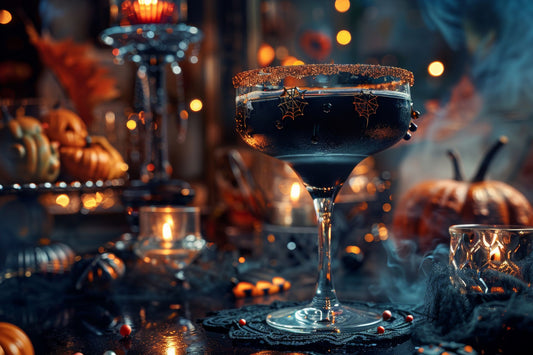
Non-alcoholic Halloween cocktails that will impress everyone
Witchy cocktails for Halloween night - alcohol-free! This year, make magical drinks that will not only look fantastic at a Halloween party, but also make you feel like you're not afraid of them the next day. 6 flavors, 6 moods, 6 creative servings - with 6 unforgettable cocktails.
Non-alcoholic Halloween cocktails that will impress everyone
Witchy cocktails for Halloween night - alcohol-free! This year, make magical drinks that will not only look fantastic at a Halloween party, but also make you feel like you're not afraid of them the next day. 6 flavors, 6 moods, 6 creative servings - with 6 unforgettable cocktails.
-
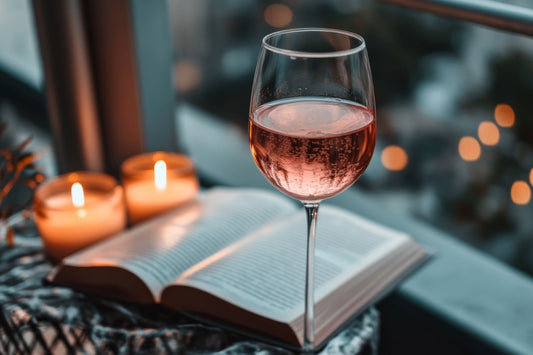
Celebrate World Mental Health Day with a non-alcoholic drink
Október 10. a mentális egészség világnapja – és egy remek alkalom arra, hogy kicsit jobban fókuszáljunk a lelki egyensúlyunkra. Egy alkoholmentes ital például tökéletes első lépés lehet ezen az úton.
Celebrate World Mental Health Day with a non-alcoholic drink
Október 10. a mentális egészség világnapja – és egy remek alkalom arra, hogy kicsit jobban fókuszáljunk a lelki egyensúlyunkra. Egy alkoholmentes ital például tökéletes első lépés lehet ezen az úton.
